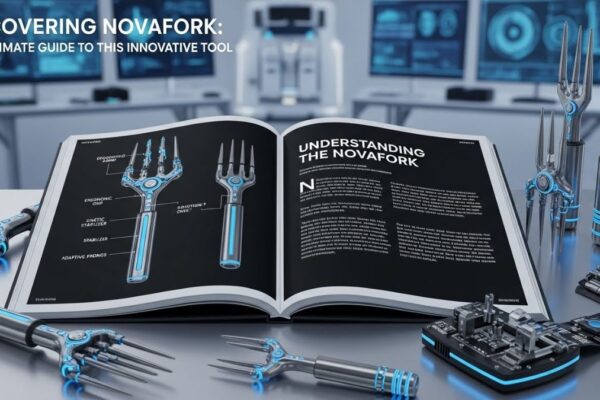Lidarmos Explored: The Benefits and Features You Didn’t Know About

Lidarmos is changing the game in various industries, but many are still unaware of its full potential. This cutting-edge technology has emerged as a powerful tool that combines precision and efficiency like never before. Imagine being able to capture detailed 3D data of your surroundings in real-time, revolutionizing how we approach tasks across different sectors.
From mapping landscapes to enhancing autonomous vehicles, Lidarmos offers unique features that set it apart from traditional methods. As we dive into the world of Lidarmos, prepare to explore its fascinating history and discover applications you may not have known existed. Whether you’re a tech enthusiast or a business professional looking for innovative solutions, this post will uncover all the benefits Lidarmos brings to the table. Get ready for an enlightening journey through this remarkable technology!
The History and Development of Lidar Technology
Lidar technology has its roots in the 1960s, emerging from advancements in laser and radar technology. The first significant application involved atmospheric research, helping scientists measure clouds and pollutants.
As lasers became more sophisticated, so did their applications. By the late ’80s, Lidar began to find its footing in mapping terrains and forests. This shift marked a turning point for environmental science and topographic surveys.
The turn of the century brought even greater innovation with the advent of GPS integration. Suddenly, Lidar could produce highly accurate geospatial data quickly.
Fast forward to today, where technological leaps have made Lidarmos compact and versatile tools used across multiple industries—from urban planning to autonomous vehicles—demonstrating how far this once-niche tool has come since its inception.
How Lidarmos Works and Its Unique Features
Lidarmos operates through a sophisticated process known as light detection and ranging. Using laser pulses, it measures distances with remarkable precision. This technology captures millions of data points in seconds, creating detailed 3D models of the environment.
One unique feature is its ability to penetrate vegetation. Unlike traditional imaging methods, Lidarmos can reveal ground contours beneath trees and foliage. This capability makes it invaluable for forestry management and environmental monitoring.
Another standout aspect is its high spatial resolution. With enhanced accuracy, users can analyze subtle changes over time—crucial for urban planning or disaster response efforts.
Moreover, Lidarmos integrates seamlessly with other technologies like drones and GIS systems. This synergy opens new avenues for data collection and analysis across various sectors, enhancing decision-making processes significantly.
Applications of Lidarmos in Different Industries
Lidarmos technology is making waves across various sectors. In agriculture, it helps farmers monitor crop health and optimize irrigation. By mapping fields in high detail, growers can make informed decisions.
The construction industry also benefits immensely from Lidarmos. It allows for precise site surveys and 3D modeling of structures before they’re built. This reduces errors and saves valuable time.
In the transportation sector, Lidarmos enhances safety measures by providing accurate data for road assessments. Smart city initiatives are integrating this tech to analyze traffic patterns and improve urban planning.
Environmental monitoring has seen a boost too. Researchers use Lidarmos to track deforestation and study changes in ecosystems over time, offering insights that were previously hard to obtain.
Even archaeology uses this innovative technology. It reveals hidden structures beneath vegetation cover without invasive digging methods, preserving historical sites while uncovering secrets of the past.
Advantages of Using Lidarmos Over Traditional Methods
Lidarmos technology brings a fresh perspective to data collection and analysis. Unlike traditional methods, it offers unparalleled precision. This accuracy significantly reduces errors in mapping and modeling.
Another advantage lies in its speed. Lidarmos operates swiftly, capturing vast amounts of data in a fraction of the time required by older techniques. This efficiency is crucial for projects with tight deadlines.
Moreover, Lidarmos can operate in challenging environments where conventional tools may falter. Its ability to penetrate vegetation or handle complex terrains sets it apart from standard surveying approaches.
The adaptability of Lidarmos also shines through its integration capabilities. It can easily combine with other technologies like GIS software for enhanced insights.
Using Lidarmos often translates into cost savings over time due to reduced labor requirements and minimized rework from inaccuracies.
Cost-Effectiveness and Efficiency of Lidarmos
Lidarmos technology is revolutionizing how industries approach data collection. Its precision often reduces the need for multiple tools and methods, streamlining operations significantly.
The speed at which Lidarmos gathers information is another advantage. Traditional surveying can take days or weeks, while Lidarmos achieves similar results in hours. This efficiency not only saves time but also minimizes labor costs.
Moreover, by using advanced sensors and algorithms, Lidarmos provides high-quality outputs with fewer errors. This accuracy translates into lower rates of rework or corrections down the line.
Investing in Lidarmos may initially seem higher than traditional methods. However, when considering long-term savings from reduced project timelines and enhanced quality, it becomes clear that this technology offers substantial value over time. Businesses are seeing a positive return on investment as they embrace these cutting-edge solutions.
Potential Future Developments for Lidar Technology
The future of Lidar technology is brimming with potential. Researchers are exploring ways to enhance accuracy and range, pushing the boundaries of what Lidarmos can achieve.
Innovations in artificial intelligence could revolutionize data processing. Imagine software that not only collects but also interprets vast amounts of information in real-time. This would enable quicker decision-making across various sectors.
Moreover, miniaturization is on the horizon. Smaller, more efficient sensors could lead to widespread adoption in consumer devices like drones and smartphones, making advanced mapping accessible to everyone.
Integration with other technologies such as 5G networks may also play a pivotal role. High-speed connectivity will facilitate faster data transfer and improve operational capabilities for industries relying on instant feedback.
As these developments unfold, we can expect Lidarmos to become even more indispensable in our daily lives and work environments.
Conclusion:
Lidarmos is revolutionizing the way we understand and interact with our world. As the technology continues to evolve, its applications across various industries are expanding rapidly. From mapping landscapes to enhancing autonomous vehicles, Lidarmos offers solutions that traditional methods struggle to match.
The benefits of using Lidarmos are clear. It provides precision and efficiency that lead to cost savings in many sectors. This innovative approach not only improves accuracy but also enhances safety by reducing human error.
As advancements continue, we can expect even more exciting developments in Lidar technology. The potential for integration with artificial intelligence and machine learning holds promise for smarter applications in the future.
You may also like

Unlocking Efficiency: A Comprehensive Guide to sruffer db


Leave a Reply